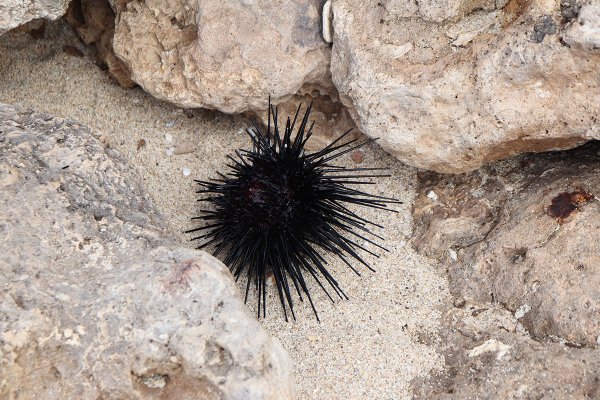Hawaii Ocean Safety Tips
Founder & certified Hawaii travel expert with 20+ years of experience in Hawaii tourism.
This article may include unbiased affiliate links at no extra cost to you. Mahalo for your support!
Hawaii's white sand beaches and beautiful blue oceans attract tourists from all over the world. While many beaches are safe for people of all ages and experience levels, some pose risks to inexperienced swimmers. Regardless of where you plan to spend your Hawaii vacation, make your stay more enjoyable and problem-free by following these Hawaii ocean safety tips:

Lifeguards can be Helpful.
One of the most important things to do when you first arrive is to ask a lifeguard about the water's current condition. Pay special attention to any information regarding rip currents, high surf, and potentially dangerous rocks that are hidden due to high tide.
It's also a good idea to track where the lifeguard is. Always pick a spot to swim that's within clear sight of the lifeguard tower.
The Buddy System
The buddy system can be beneficial during emergencies. Always swim with a buddy, regardless of how dangerous the current conditions are. Children should never swim alone, and an adult should always be close to the water to monitor their behavior.
Use caution in the Winter months
During the winter months, certain areas in Hawaii can become dangerous for swimming or snorkeling due to powerful ocean currents, particularly on the north-facing shores of the islands. The large swells are driven by winter storms in the northern Pacific, creating strong waves and rip currents. This is especially true on islands like Oahu, Kauai, and Maui, where beaches like Waimea Bay or Hanalei Bay can have hazardous conditions. It’s crucial to pay attention to local weather and surf reports, follow lifeguard warnings, and stick to safer, calmer areas like sheltered coves or lagoons if you’re visiting during the winter season.
Hydration and Sun Protection
Stay hydrated and wear sunscreen, as Hawaii’s sun is extremely intense, with a high UV index. A stronger SPF may be necessary—be sure to choose a reef-safe option. Dehydration or sunburn can impair both your judgment and physical ability while in the water.

Warning Signs: Pay Attention!
Pay attention to ocean and beach warning signage, placards, and labels while visiting Hawaii - they are there for your protection and may save your life. If a warning has been placed for a beach or snorkeling spot saying it's not safe that day, it's NOT safe that day!
Rip Currents: What to Do
Rip currents can be potentially life-threatening if you don't how to escape from them. Once you notice that you've been caught in a rip current, swim parallel to the beach to escape it and then swim to shore once you have cleared the current. If you cannot swim or are having difficulty escaping the current, it's best to stay as still as possible and wave or yell for help. Panicking will only cause you to become tired, and you may be swept further away from the beach.
Check for Shorebreaks
Shorebreaks can be especially dangerous for unsuspecting beachgoers. These are waves that break directly onto the shore, often with great force, and can knock swimmers off their feet or cause injury. Avoid swimming or bodyboarding in areas with strong shorebreaks, especially at beaches like Sandy Beach on Oahu.
Stay Aware of Tide Changes
Tide shifts can drastically alter beach conditions, creating stronger currents or exposing sharp rocks. Check tide charts and know that rising tides can make previously safe swimming areas hazardous.
Grab Your Free 2025 Guides!
Hawaii Intro Visitor Guide
+ Our Summary Guidesheets!
Includes the top must-see & do attractions, best times to visit, a monthly weather & visitor summary, and our tips on how to save when booking your car rental, tours, and activities. Plus, grab our free Hawaii Summary Guidesheets. Check out our 2025 Hawaii Visitor Guides.

Watch for Creatures
Hawaii is famous for its variety of ocean life, many of which can be viewed while snorkeling only a few meters from the beach.
Check the jellyfish warning calendars. Box jellyfish typically come to shore 8-10 days after a full moon. Other marine animals, like sea urchins, can also cause painful injuries, so water shoes are a good idea in rocky areas.
While it may be tempting to touch everything, it's best to keep your hands to yourself. Creatures such as eels, sea urchins, etc. are harmless unless threatened. If one happens to get too close to you, just let it swim by without sticking your hands too close to it.
Many types of coral have sharp edges. Because of this, always watch where you step. Hawaii's ocean waters are usually clear enough that it is relatively easy to see what's beneath your feet.
Avoid Snorkeling Right After Flying
After air travel, some experts recommended to wait before snorkeling, as recent flights can increase the risk of developing Rapid Onset Pulmonary Edema (ROPE), a condition where fluid accumulates in the lungs, making it hard to breathe. Allowing at least 24 hours before snorkeling can help reduce the risk and ensure safer conditions in the water. This has been addressed in the news quite a bit recently.
Aside from these Hawaii ocean safety tips, it's always best to double-check for, re-read all signs, and avoid the water if a lifeguard is not on duty or if you think the conditions are too dangerous. And remember, due to rogue waves, never turn your back to the ocean while in the water or near shore.
Our Other Recommendations
Affiliate Disclosure: We may earn commissions from some travel partners (like Amazon or Expedia) which helps us maintain this site. These links are at no extra cost to you and don't impact our honest & unbiased recommendations. Remove all the ads →




